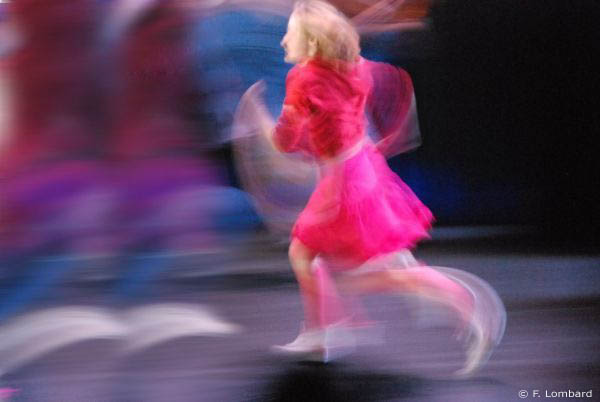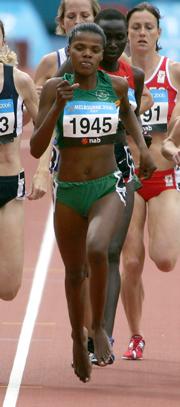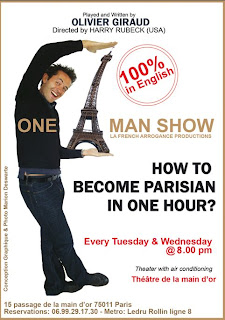Running barefoot less impact because of evolution? To run just one pair of shoes ...
Perhaps not, according to D. Liebermann an evolutionist of Harvard, reported in Nature News by Buchen, Lizzie (2010) ( A Soft ride for barefoot runners ): we could run even better - more flexible in all cases - barefoot. It shows that those who run without shoes have long been a movement which runs over the foot and the impact forces produced more regular with fewer peaks. He even suggests that this may cause fewer injuries. I often think when they heard the high heels of a neighbor slam his office decided not on the hallway floor ...
Fig 1: The flexibility of movement "round" that place his foot would be more important than shoes to minimize impacts. [Img ] Source: F. Lombard
Fig 3: Those who are accustomed to running barefoot naturally cushion the impact by landing on the "palm" of the foot, rather than the heel. [Img ] Source: Rick Rycroft / AP Photo. | |
 | Lieberman and his team (
Foot strike patterns and collision forces in habitually barefoot versus shod runners ) performed a biomechanical analysis of endurance runners on a mat with force sensors, with runners who run barefoot for a long time (Used to run barefoot = HCPN) and accustomed to running shoes (HCC = ) as well as recent converts to the race barefoot. (Lieberman, DE, et al., 2010) Lieberman said that the first time a rider accustomed to running barefoot rushed on his aircraft, he was very surprised: the usual peak force during impact was absent. (Trad. personal) He then compared three groups of people: runners who long run barefoot (accustomed to running barefoot = HCPN), distance runners accustomed to running shoes (HCC), and distance runners accustomed to running barefoot running shoes (HCCPN) This comparison showed that those who long run barefoot (HCPN) produce impacts on the ground much softer: the foot hits the ground by the front-foot strike drills
(FFS), rather than the heel rear-foot strike (RFS). The majority (75-80%) of runners accustomed to running shoes (HCC) impacting the ground tail first (RFS): it produces reaction forces of ground the order of 1.5 to 3 times the body weight during the first 50 milliseconds: the rise of brutal force is manifested by a peak in figure 4.a. We see that the riders HCPN produce forces that vary more regularly see Fig 4.c. If one looks only at the peaks of the first few milliseconds, measurements show that the impact force was 0.58 ± 0.21 body weights among regulars bare foot (HCPN) that place the foot (FFS), which is 3 times less than used to running shoes that impact on the heel (RFS) or when they run barefoot HCCPN (1.89 ± 0.72 body weights) or wearing (HCC) (1.74 ± 0.45 body weights). Lieberman, DE, et al. (2010) | Fig 4: Comparison of the dynamics of the foot during the running of riders used to run barefoot or shod. Riders accustomed to running barefoot (c) produce less peak forces during the impact of the foot on the ground (note the absence of a peak in the first 50 milliseconds) than those who are shod (b) or when Running barefoot runners accustomed to running shoes (a). The force of impact with the ground, even with a cushioned insole as high as three times the weight of the rider. Those who touch the ground from the front (FFS) that are not subjected to forces of 0.6x weight. [Img
] Source: Lieberman, DE, et al. (2010)
Use flexion of the ankle to reduce the impact
Lieberman thus shows that the force of impact with the ground by the heel (RFS), even with a sole cushioning is much greater than in those that touch the ground from the front (FFS) (as HCPN) held the foot with flexion of the ankle - allowing muscles and tendons of the foot and calf to function as shock absorbers. He thinks this could explain the frequent injuries of the foot race, but Lizzie Buche said that the link has yet to be demonstrated. Bramble think the race roadway does not take advantage of opportunities in our depreciation and lower limb that increases the risk of injury. "Ignoring how we evolved and how our bodies are made to work is a dangerous game," he said.
The evolution of our skeleton related to distance running - the muscle of the buttock-, short toes and the arch of the foot are related to distance running and have allowed our ancestors to continue and eventually exhausted to catch prey.
 Fig 5: Comparison of the human skeleton and other living or fossil primates. a, c, human, with structures related to the endurance race highlighted. b, d, Chimpanzee. e, Reconstruction of H. erectus f, reconstruction of A. afarensis. [img ] Source: Bramble, DM & Lieberman, DE (2004) Thus the endurance race would be a decisive factor in our evolution and not just a station that frees the hand drawn as has been often considered.
Fig 5: Comparison of the human skeleton and other living or fossil primates. a, c, human, with structures related to the endurance race highlighted. b, d, Chimpanzee. e, Reconstruction of H. erectus f, reconstruction of A. afarensis. [img ] Source: Bramble, DM & Lieberman, DE (2004) Thus the endurance race would be a decisive factor in our evolution and not just a station that frees the hand drawn as has been often considered. Not so bad it eventually ...
The sprint speed of humans is not exceptional, but the authors show that the speed limit of endurance of a man who is very well trained (up to 6.5m / s for athletes' exception) is outstanding for a primate and greater than the speed of trot for most animals of comparable size cf Fig 5a. A quadruped of the size of a human (65kg) Trotter to 2.8 m / s pass to gallop to 3.8 m / s. The human race thus exceeds the preferred trotting speed (3.1 m / s) and the transition to galloping (4.4 m / s) Ponies (110-170kg), and even for a beast of 500 kg. As the galloping quadrupeds get tired, the authors argue that over very large distances the ancestors of humans eventually overtake their prey. Fig 6: a) endurance race of the best human (blue) speed exceeds the speed too supported many mammal (blue). b) Running maintains efficiency over a wide speed range, while quadrupeds have a U-shaped curve of efficiency and therefore optimum speed marked (dotted rectangle). Humans can exceed this optimum speed in the race endurance. TOC metabolic cost of moving to O2 in ml / kg / km [
img] Source: Bramble, DM & Lieberman, DE (2004).

In science ... we affirm that we are sure.
A cursory reading of these texts suggests that natural selection would have favored anatomical structures and an approach to running barefoot. So the floor would race against nature and would explain a lot of injuries. To determine whether these results scientifically validate these findings though, one must understand how they were created, but also establish strength of the relationship with the conclusions. These results are very convincing "consistent with the data" but is this the only possible explanation for these data? Lizzie Buchen, note that the fact that our ancestors were running down the leg (FFS) does not prove that it is ideal for those of us grow up with shoes. There is no clear evidence that shoes protect existing injuries, but there is not more than those who currently run a bare foot would have fewer injuries, "she adds. To be sure that it should establish the
only possible conclusion for this data. In fact it puts the bar much higher certainty. And explains why the scientifically validated product less certainty greater than faith or politics. Finally ... in principle ... :-) Sources: Buchen, Lizzie. (2010).
A Soft ride for barefoot runners
forces in habitually barefoot versus shod runners.
[10.1038/nature08723]. Nature, 463 (7280), 531-535.
extracts intranet.pdf experimental blog about the evolution of biology. To explore how we could keep alive the link between research and teaching.
 Fig 2: A trend in the shoe seems to be footwear soles rounded "rocker sole". [Img
Fig 2: A trend in the shoe seems to be footwear soles rounded "rocker sole". [Img 

 In science ... we affirm that we are sure.
In science ... we affirm that we are sure. 

 , Ecole Normale Superieure, designed to understand how, from childhood to build our relationship with science.
, Ecole Normale Superieure, designed to understand how, from childhood to build our relationship with science. 

